Grow Baby Grow
Week 0
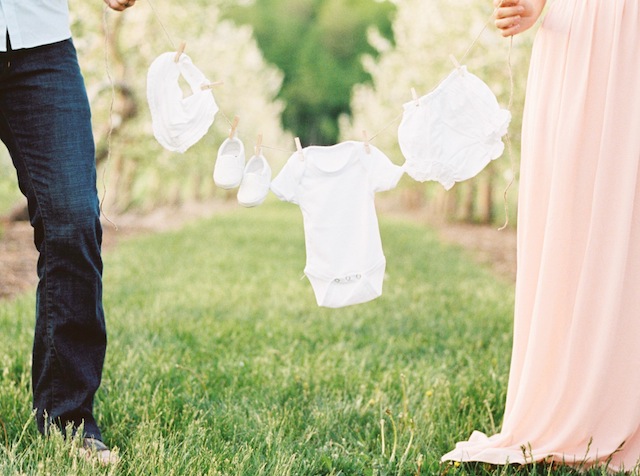
Preconception. If you are planning to become pregnant and are able to plan ahead of time, consider having a preconception exam to make sure your are up to date with your adult vaccines, changing your diet, caffeine intake and exercise routine, start taking a prenatal vitamin and visiting your dentist. Research suggests that a prenatal vitamin containing folic acid taken just six months prior to conception can be beneficial for a soon-to-be growing baby. If possible, consider getting yourself in optimal physical shape so you can create the healthiest environment for your baby.
As you begin your pregnancy journey, remember that by following PAK’s proactive forty-week gestational guidelines and My Empowered Pregnancy Checklist, an expectant mom will never walk into a doctor’s office in the same way again!
Week 1

Welcome to your first trimester! This week, preconception, commences your 40-week pregnancy journey beginning with the first day of your last menstrual period. So, technically speaking you are not pregnant the first week or two of your pregnancy. Get ready.
Please speak with your health care team soon about your diet and supplements. You may want to enhance your diet by including more leafy vegetables, less sugars, less processed foods, and eliminating caffeine, deli meats and unpasteurized cheeses.
Take a prenatal vitamin with folic acid as a regular daily supplement. There are some medical conditions that would call for specific types of prenatal vitamins with much higher doses of folic acid. One such medical condition would be a type of blood clotting disorder. Please consult your health care team for the best recommendations for you. Lastly, avoid handling the cat litter box or gardening, as mom can pick up Toxoplasmosis, a neglected parasitic infections, from either activity.
Week 2

Conception usually occurs just two weeks after your period begins, as day 13-15 is typically the time a woman is known to ovulate during a 28-day cycle. However, ovulation can take place anywhere between day 11 to day 21, depending on the length of a woman’s menstrual cycle.
Your due date will be determined by your health care provider counting ahead 40 weeks beginning from the first day of your last period. Your period is a key component of your pregnancy, even though you were not expecting at the time.
Week 3

During conception, the sperm’s nucleus with its 23 chromosomes, one of which determine the sex of your baby, will join with the egg’s nucleus containing an equal number of chromosomes, creating a single set of 46 chromosomes, a “zygote”. Your baby’s DNA, which is locked in these 46 chromosomes, establishes the baby’s sex, eye color, hair color and all the inherited attributes of a lifetime.
If more than one egg is fertilized, you will have multiple zygotes, better known as twins, triplets, quadruplets and quintuplets.
Week 4

Around the 4th to 5th week, once you have missed your period and have taken an at home pregnancy test, you will see the double lines. Congratulations, you are now officially pregnant!
As your baby nestles into a new 40-week abode, your progesterone level continues to climb, now towering over your last month’s normal level. The hormonal signal for your period to begin is absent, your uterine lining is not shed and your period is missed. YAY! You are pregnant and now you know there is a little life growing inside of you.
Week 5
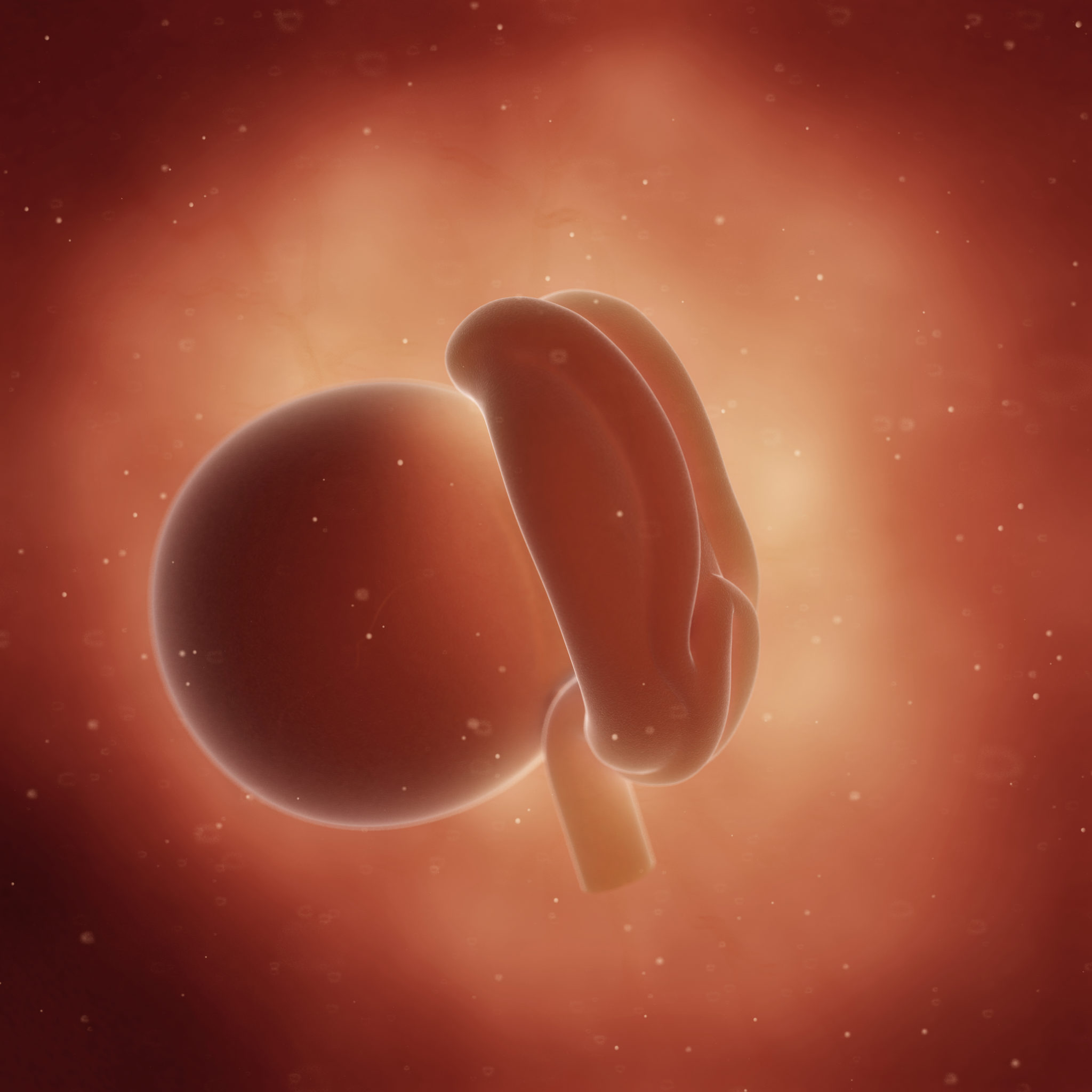
At this time, the embryo is developing rapidly; the baby’s brain, spinal cord, heart and other organs begin to form. The embryo is now very vulnerable to harm from substances delivered from the mother such as cigarette smoke, medications, illegal drugs or alcohol.
Three layers now create the embryo; the ectoderm, the mesoderm and the endoderm. All layers work together creating the simple and complex beginnings of your baby. Amazingly, your baby’s heartbeat may now be noticeable on an ultrasound.
Your baby is as tiny as the point of a lead pencil. What a busy and brilliant week it has been!
Week 6
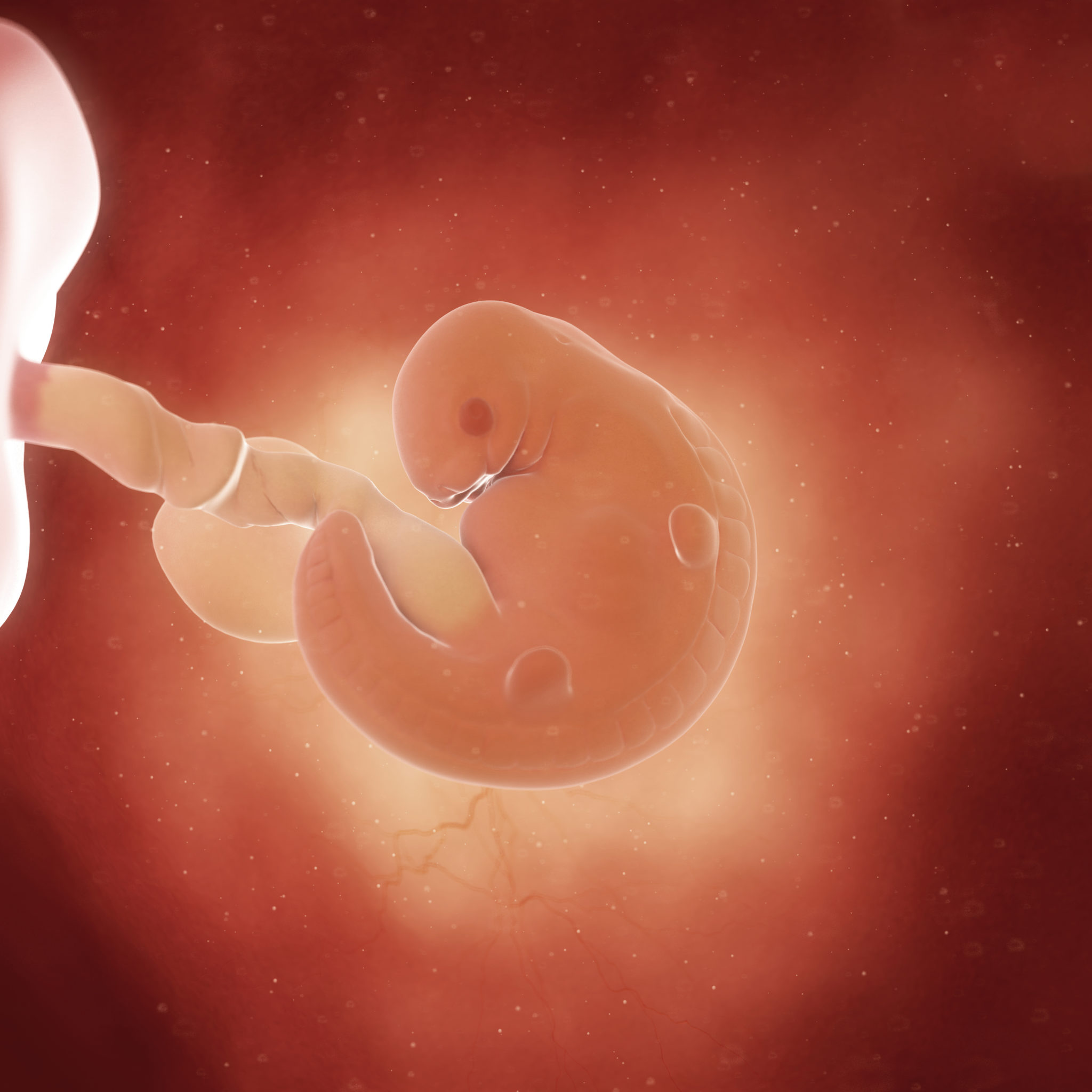
Your baby’s neural tube running along the length of the back is already sealing, and blood is now being pumped from your baby’s heart nearly twice as fast as yours. Development is brisk right now!
Essential facial features appear as the tubes forming the inner ear and arches help with the formation of the jaw. Your baby’s body is C-shaped and the head now differs from the bottom of the embryo! Small buds will soon become your baby’s extremities. Cells begin to form the lungs, stomach, liver and pancreas. You can now see your baby on an ultrasound!
The placenta, your baby’s first lifeline to you forms. While you supply oxygen and nutrients to your baby via the placenta, the exchange and transport of your baby’s waste products into your blood occurs. As both your circulatory systems work together, a protective discrete membrane insures your systems do not mix!
The second part of your baby’s essential lifeline is also developing. The umbilical cord creates the optimal environment in utero for your baby to grow and thrive. In order for your baby to develop perfectly in the womb, the umbilical cord must be watched and monitored throughout your pregnancy.
Week 7
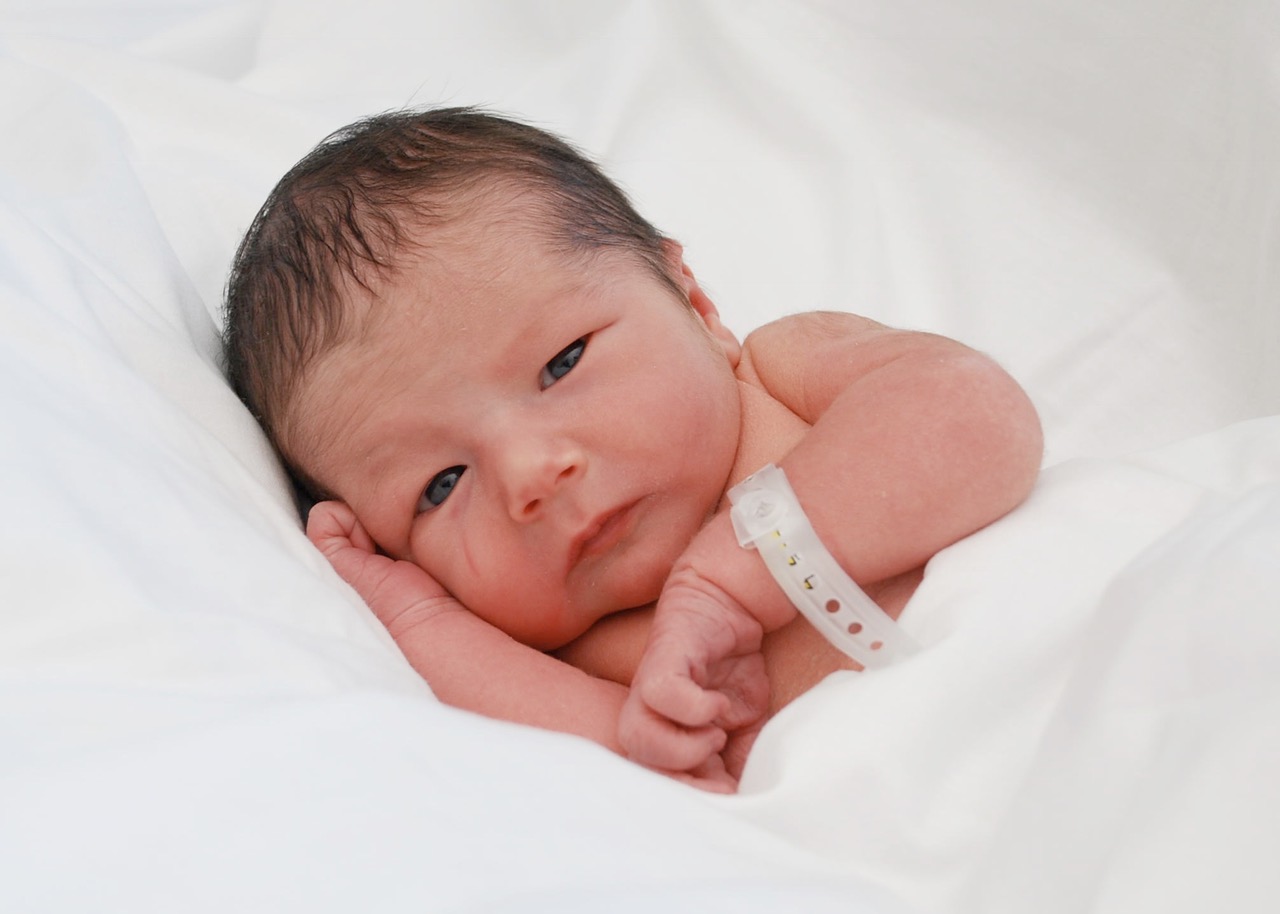
Your baby’s brain and face are now rapidly developing. Tiny nostrils become visible and the lenses of the eyes begin to form. The arm buds that sprouted last week now take on the shape of paddles.
Your baby is now cushioned by a thin membranous sac and will be immersed in amniotic fluid during your pregnancy. The baby will be protected from all but the most severe jolts while floating buoyantly in temperature-controlled surroundings.
Little edges now appear signaling that tiny fingers and toes are beginning to emerge on the buds that are developing into baby’s extremities. Hollowed areas mark facial features.
Internal organs are in place although not completely developed nor operating on their own just yet. Your baby has nearly grown twofold as blood is circulating brilliantly through your baby from the liver.
By the end of this week, your baby might be a little bigger than the top of a pencil’s pink eraser.
Week 8

Make sure you’ve scheduled your first visit with your health care team. As for your baby, his or her limbs are getting bigger, fingers are now taking shape, eyes are now evident and ears are forming outside the head. A nose is now present along an upper lip. Your baby’s curved shape is now lessening and is roughly ½ inch long.
Your baby’s lifeline, the umbilical cord, is in place and strong. In most cases, it is comprised of one vein and two arteries. The vein in the umbilical cord delivers oxygen and nutrients from you through the placenta to your baby. The two arteries whisk away waste products from your baby’s blood supply into yours.
Week 9
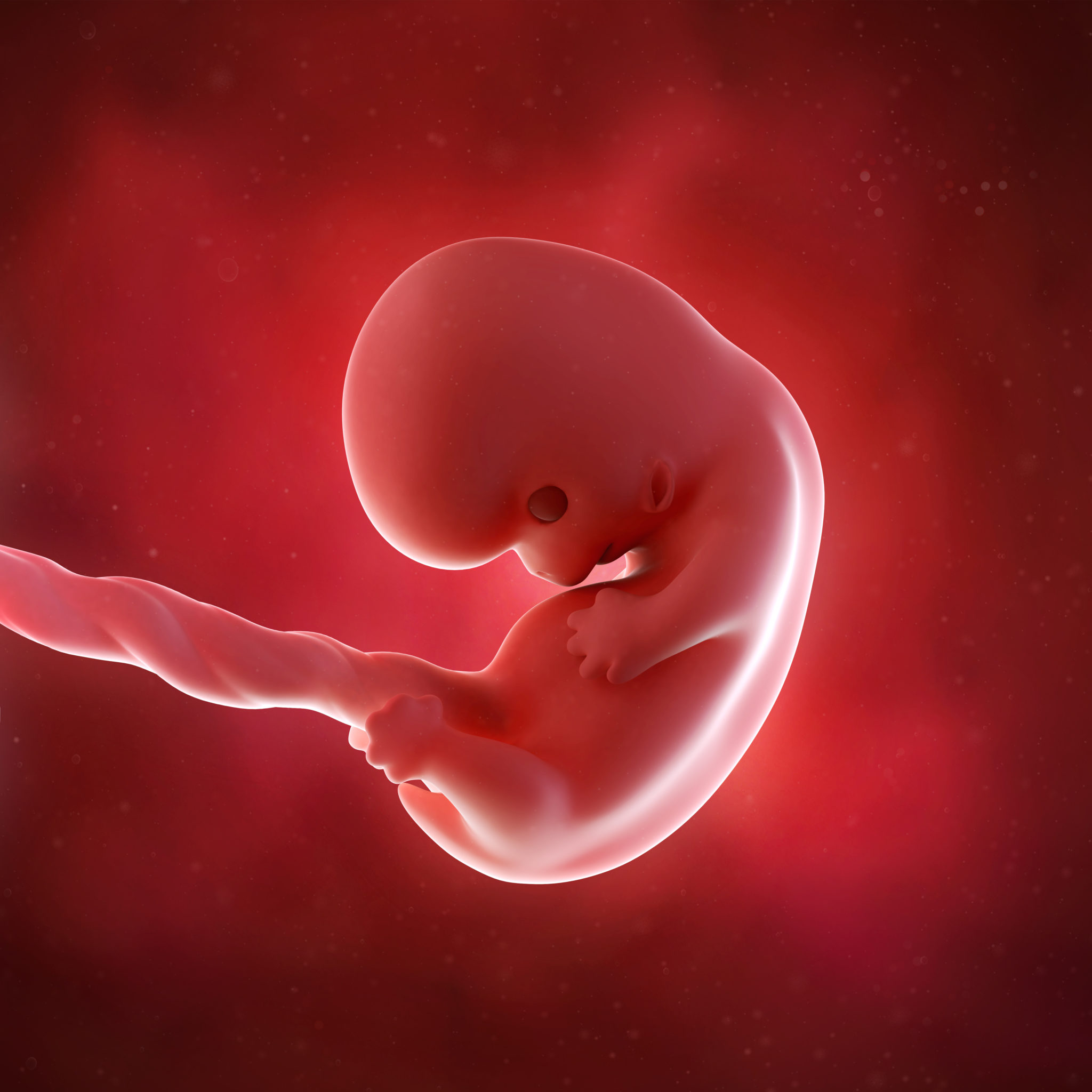
Your baby is busy again this week! His or her tiny outer parts are forming. Little toes appear. A smidgen of a nose begins taking shape on a hefty head. Small bulges on each side of the neck indicate the position of the ears. The inner ear, developing now, will be essential for balance and hearing. Lips are barely present on a minuscule mouth that closes and opens.
Your baby’s elbows can bend now as muscles and bones have matured. The backbone and ribs are supple and bendable, which solidify into bone later on, even following delivery. Although tiny and not fully functioning, all internal organs are present. Amazingly, portions of the intestines housed in your baby’s umbilical cord will move completely into your baby’s abdomen when space permits. Clear, yellow tinged urine is now being produced and expelled into the amniotic fluid that does not disturb your baby whatsoever. Your baby may begin moving now. Your baby is about ¾ inch long.
Week 10

Your baby’s head is now more circular and the neck is now forming. Teeth buds come into view. As tiny eyelids begin to close to protect developing eyes, your baby’s eyes begin to take on their permanent color. Although most eyes appear blue on delivery day due to incomplete pigmentation, their real color appears later.
The umbilical cord is well defined; Wharton’s jelly keeps the cord free of kinks allowing the blood flow of oxygen and nutrients between you and your baby to take place in a matter of seconds.
At birth, your baby’s umbilical cord will measure 20 – 22 inches in length and approximately one inch in thickness. The placenta will tip the scales at approximately 1½ pounds; presently the placenta is a mere one ounce. Your baby’s lifeline grows as your baby grows. So, grow baby grow!
Week 11
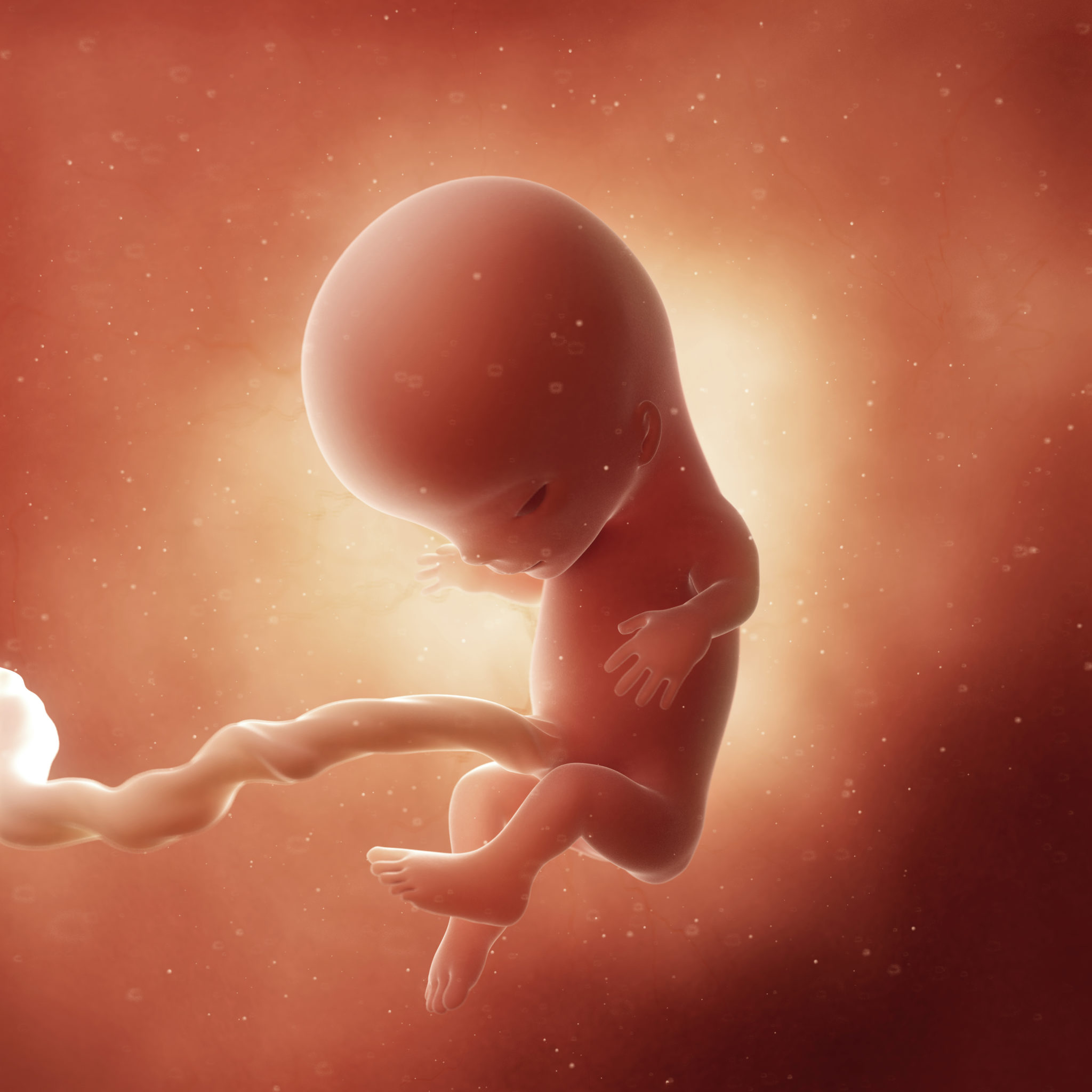
Your baby’s head is responsible for half of his or her length. But there’s no need to worry, due to rapid growth during the upcoming weeks, your baby’s body will soon catch up. Your baby’s eyes are shut and quite apart but may respond to a dazzling brightness on mommy’s tummy. Your baby’s ears are lower during this trimester but will eventually rise to their normal birth position in the weeks ahead.
Reproductive organs, although appearing similar in both sexes and among the last to develop, are present. Ovaries are present in girls; testes are present in boys’ abdomens. It is during this week that your baby advances from embryo to fetus status. From now until 20 weeks (your halfway point), your baby’s weight will increase by 30% and his or her length will triple. By now, your baby roughly measures about 2 inches in length and weighs almost one third of an ounce.
Week 12
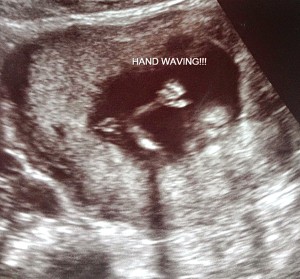
You’ve reached the end of your first trimester. Your baby is growing fingernails and toenails, and also exhibiting a human profile as both the nose and chin are well defined. Vocal cords are present but due to the lack of air existing in your baby’s environment to make vibrations, the baby’s cords most likely do not make any sounds. Your health care team, using a Fetal Doppler ultrasound, can probably detect the heartbeat now. Lengthwise, your baby is measuring about 2½ inches in length, the size of an apricot. Your baby weighs half an ounce now.